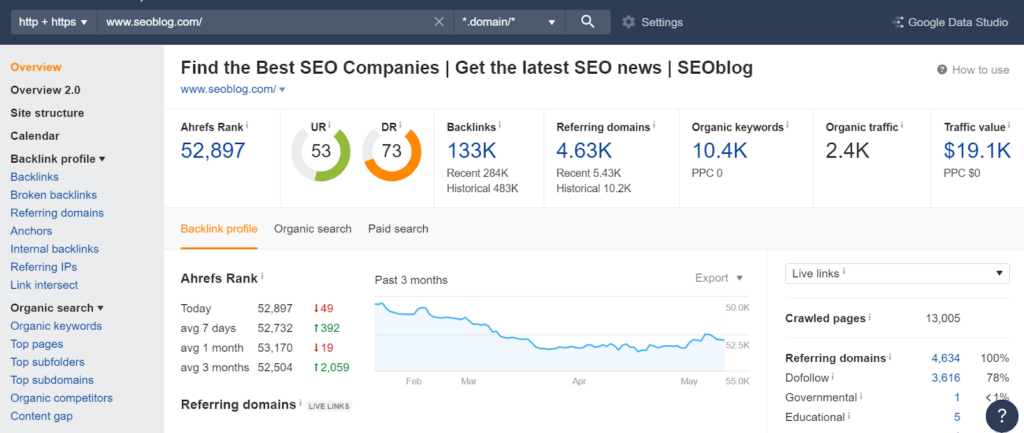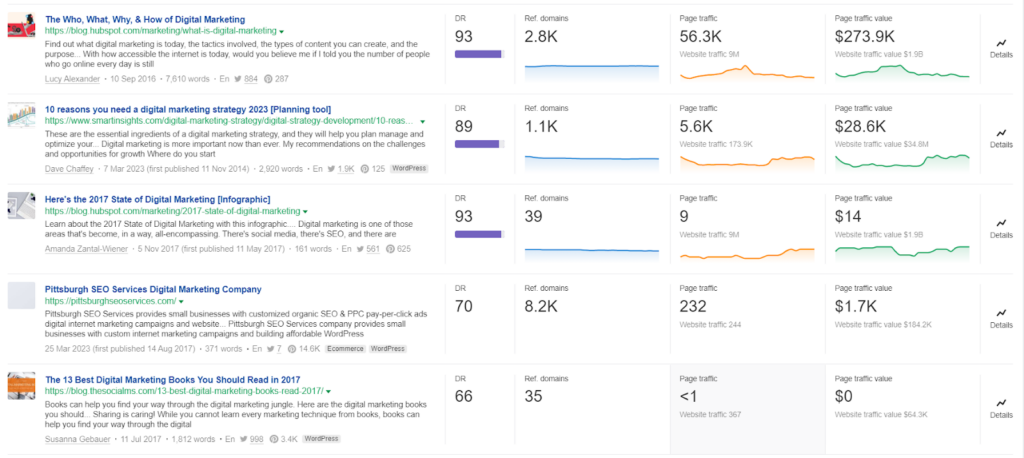Have you ever wondered what sets successful websites apart from the rest when it comes to search engine rankings?
In the fiercely competitive digital landscape, achieving high visibility on search engine results pages (SERPs) is crucial for driving organic traffic. While there are various factors that contribute to improved rankings, one strategy that stands out is link insertion.
But what is link insertion in SEO, and how can it be leveraged effectively to boost your website's visibility and authority? This article will guide you through the ins and outs of link insertion, providing valuable insights on how to implement it properly for optimal results.
So, if you're ready to unlock the potential of link insertion and skyrocket your backlinks, keep reading!
What is link insertion in SEO?
Link insertion refers to the practice of acquiring backlinks to your content from other websites. It involves reaching out to relevant and authoritative websites within your industry or niche and persuading them to include a hyperlink that leads back to your website or specific content piece.
Process of link insertion for maximum results
As an example, let's outline a strategy to acquire a backlink from SEOblog:

If you don't already have an account, sign up for Ahrefs at https://ahrefs.com/ and choose a subscription plan that suits your needs. Enter your website's URL into Ahrefs' Site Explorer tool. It will provide you with valuable data about your website's backlink profile, organic search traffic, and more.

As you review the top pages, assess the quality and relevance of the websites linking to them. Look for authoritative and reputable sources, as well as websites within your industry or niche that are relevant to your content.

From the list of top pages, identify those that are closely related to the content you want to promote or the page on your website you want to acquire a backlink for. These are the pages that may present suitable opportunities for link insertion.

Click on the number in the "Backlinks" column next to a specific page to see the linking context. This will provide more details about the specific websites linking to that page and the anchor text used in the backlinks.

Look for contact information, such as an email address or a contact form, on the website. This information is typically available in the "Contact" or "About" section.

Develop a clear value proposition that explains why a backlink to your website or content would be beneficial to their readers. Highlight unique insights, additional resources, or complementary information that your content can provide.
Link insertion strategies
Let’s explore 3 most powerful link insertion strategies that you can employ to strengthen your backlink profile.
- Broken link building
Broken link building involves finding broken links on other websites and replacing them with links to your own content. This strategy allows you to provide value to website owners by helping them fix broken links while gaining a backlink to your own website. Ahrefs provides a helpful set of tools and features to identify broken link building opportunities.
Step 1: Start with site explorer
Access the Site Explorer tool in your Ahrefs account. Enter the URL of the website you want to explore for broken link building opportunities into the search bar. For example, let’s explore Hubspot Blog.

Once the analysis is complete, navigate to the "Backlinks" tab in the left sidebar. This report provides a comprehensive overview of the backlinks pointing to the target website.

Within the Backlinks report, click on the "Broken" filter. This will display a list of all the broken links that Ahrefs has detected on the target website.

If desired, you can further refine the results by using the "Link Type" filter. Choose "Dofollow" or "Dofollow + Nofollow" to focus on specific types of broken links.

Review the list of broken links and examine the referring pages (where the broken links are located) to assess their relevance to your website or content. Determine if you have relevant content on your website that can serve as a suitable replacement for the broken links.
Step 6: Outreach to webmasters
Once you have identified broken links and suitable replacement content, reach out to the webmasters or website owners of the referring pages. Notify them about the broken link and offer your replacement content as an alternative.
- Skyscraper technique
The Skyscraper Technique involves creating high-quality, comprehensive content that surpasses existing content on a given topic. By reaching out to websites that have linked to similar but less comprehensive content, you can offer your superior content as an alternative, increasing the chances of acquiring backlinks. Here's how to implement this strategy:
Step 1: Identify link-worthy content
Use Ahrefs' Content Explorer tool to search for popular content within your industry or niche. Enter relevant keywords and filter the results by the number of organic shares or backlinks to identify highly linked or shared content.

Develop an in-depth, well-researched, and visually appealing piece of content that provides more value than existing content on the same topic. Make it more comprehensive, up-to-date, or visually engaging.
Step 3: Find linking websites
Use Ahrefs' Site Explorer to identify websites that have linked to the original content you analyzed.

Explain how your content provides a more valuable and updated resource for their audience. Politely request that the website owners consider linking to your improved content instead. Emphasize the added value it brings and how it can benefit their readers
- Link exchange
link exchange, which involves a mutual agreement between two website owners to exchange backlinks. The objective is to benefit from the shared traffic and increase the authority and visibility of both websites. Here's how it works:
Step 1: Find relevant websites
Identify websites within your niche or industry that are relevant to your content and target audience. Use Ahrefs to identify websites within your niche or industry that have a good Domain Authority (DA) score and align with your target audience. Look for websites that are likely to be interested in exchanging links.

Reach out to the website owners or webmasters of these relevant websites, expressing your interest in a link exchange. Highlight how linking to each other's content can provide value to both parties.
Step 3: Negotiate terms and implement the links
Discuss the specifics of the link exchange, such as the placement of the links, anchor text, and the number of links to be exchanged. Ensure that the links are contextually relevant and add value to the user experience. Once an agreement is reached, implement the agreed-upon links on the respective websites.
Email template you can use for link insertion outreach
Here is email template that you can use as a starting point for link insertion outreach:
Email Template 1:
Subject: Broken link on [Website Name]
Dear [Website Owner],
I recently came across your website, [Website Name], and I noticed that you have a broken link on one of your pages. The link in question is [Link URL].
I believe that I have a resource on my website that would be a great replacement for the broken link. My resource is [Resource Name], and it provides valuable information on [Topic].
If you think it would be a good fit, I would appreciate it if you could replace the broken link with my resource.
Best regards,
[Your Name]
Link insertion do's and don'ts
When engaging in link insertion for backlinks, it's important to adhere to certain do's and don'ts to ensure the effectiveness and ethicality of your strategies. Here are some key guidelines to follow:
Do's:
- Focus on relevance
Seek backlinks from websites and content that are relevant to your industry or niche. Ensure that the context of the link aligns with the content it is linking to, providing value to the users.
- Prioritize quality over quantity
Aim for high-quality backlinks from authoritative and reputable websites. Focus on acquiring a few quality links that can have a greater impact on your website's visibility and authority.
- Create valuable content
Develop high-quality, informative, and engaging content that attracts natural backlinks. Valuable content increases the likelihood of other websites linking to it organically.
- Build relationships
Establish genuine relationships with website owners, influencers, or bloggers in your industry. Engage with their content, provide meaningful comments, and share their work. Building relationships can lead to natural link insertion opportunities.
- Diversify anchor text
Use varied anchor text when inserting links. Avoid over-optimization and excessive use of exact-match anchor text. A diverse anchor text profile appears more natural to search engines.
Don'ts:
- Use irrelevant or low-quality websites
Avoid acquiring backlinks from irrelevant or low-quality websites that may have a negative impact on your website's reputation and search engine rankings. Ensure that the websites you target are reputable and authoritative.
- Overstuff links in content
Refrain from overloading your content with excessive links. Maintain a natural and user-friendly experience by including relevant links that enhance the content's value, rather than creating a spammy or intrusive environment.
- Ignore link quality monitoring
Regularly monitor your backlinks to ensure they remain active and relevant. Identify and address any broken or toxic links that can potentially harm your SEO efforts.
By following these do's and don'ts, you can implement effective and ethical link insertion strategies that contribute positively to your website's SEO efforts, enhancing its visibility and authority in a sustainable manner.
What to look for in a good website for link insertion
When evaluating a website for link insertion, there are several factors to consider to ensure that it is a good fit for your backlink strategy. Here are some key elements to look for:
- Domain Authority (DA)
Domain Authority is a metric that indicates the overall strength and authority of a website's domain. DA scores range from 0 to 100, with higher scores representing stronger authority. To check the DA of any website, you can use the free Ahrefs Website Authority Checker. This tool allows you to enter the URL of a website and obtain its corresponding DA score.

- Relevance to your niche
The website should be relevant to your industry or niche. The content and topics covered on the website should align with your own content, ensuring that the backlink provides context and relevance to both the source and target.
- Organic search traffic
Analyze the website's organic search traffic using tools like Ahrefs or SEMrush. A healthy amount of organic traffic indicates that the website is attracting visitors through its content, making it a valuable platform for link insertion. You can analyze a website's organic search traffic using Ahrefs.

- Trustworthiness
Evaluate the trustworthiness and credibility of the website. Check if it has a professional design, high-quality content, and a strong reputation within your industry. Look for signs of editorial integrity, accuracy, and a commitment to delivering reliable information.
- Quality of existing backlinks
Evaluate the quality of the website's existing backlinks. Look for links from authoritative and reputable sources. A diverse and high-quality backlink profile demonstrates that the website attracts links from other trusted sources, adding to its credibility and authority. To evaluate the quality of existing backlinks using Ahrefs, navigate to the "Backlinks" section. Here, you will find a list of backlinks pointing to the website.

By considering these factors, you can identify websites that are reputable, relevant, and capable of providing valuable backlinks. Remember, a strong backlink profile consists of quality links from authoritative websites that align with your content and target audience.
If you have any questions about the process of link insertion, we will be happy to answer them during a free consultation.
